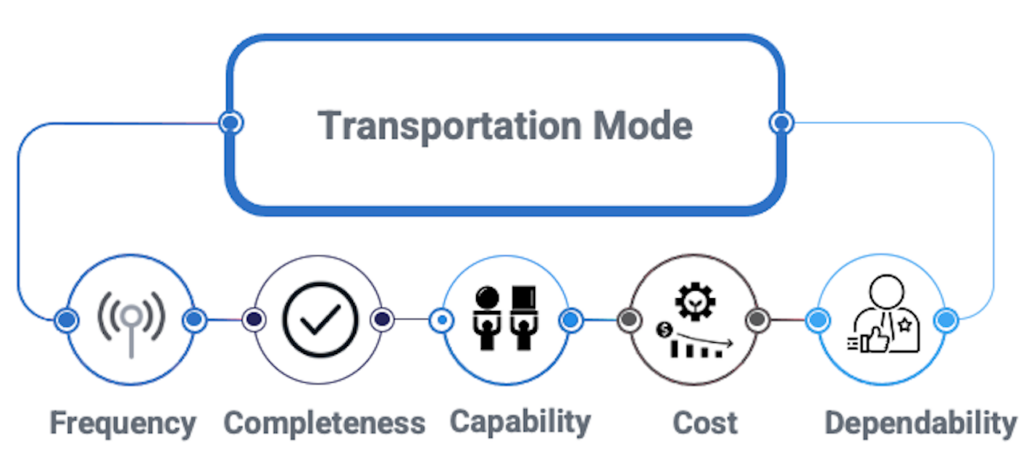Today, managing inbound transportation is no longer just about buying a generic commodity. It has become a complex decision that involves considering a range of price and service options. To achieve substantial savings and improved services, it is essential to carefully evaluate and select the right transportation mode, conduct price analysis, negotiate aggressively, assess the scope of value-added services, and continuously search for cost-reduction opportunities with the help of knowledgeable personnel.
Buyers need to consider several performance characteristics when selecting the appropriate mode of transportation for inbound shipments. These characteristics should be matched with the type and quantity of product being shipped, as well as the capacities and capabilities of the transportation mode, and relevant cost issues.
There are six performance characteristics that drive any transportation selection decision.
Completeness
This feature pertains to the transport mode’s capacity to transfer goods from one place to another without relying on other modes of transportation. The fewer times the item is transported, the lower the transport expenses and the faster the delivery time.
Dependability
The reliability of transportation is determined by how well it performs in meeting expected delivery times. Dependability is crucial to ensure that the scheduled availability of inventory is delivered on time.
Capability
When it comes to transportation, capability refers to how well a specific mode of transport can handle a particular load. Factors such as the type of product being transported (liquid, solid, bulk, or packaged), the weight of the load, and its dimensions all play a crucial role in determining the best materials handling equipment and mode of transport to use.
Frequency
The performance factor measures how often a transport mode can pick up and deliver goods. If the transport interval is shorter, the mode is more flexible in responding to channel requirements.
Cost
Transportation incurs various expenses. The primary cost is the fee paid to the carrier for utilizing the mode of transportation. Other expenses include labor and material handling for loading and unloading the transport medium, risks of spoilage and damage during transit, insurance coverage to safeguard against potential losses, and carrying costs for inventory while in transit.
Speed
Efficiency is a crucial aspect of transportation, as it allows for the optimization of time and location. Transportation efficiency is measured by the duration needed to transfer goods from the origin to a terminal, load them onto the transport vehicle, travel between terminal points, account for additional costs like fuel, and finally deliver the goods to the destination terminal.

